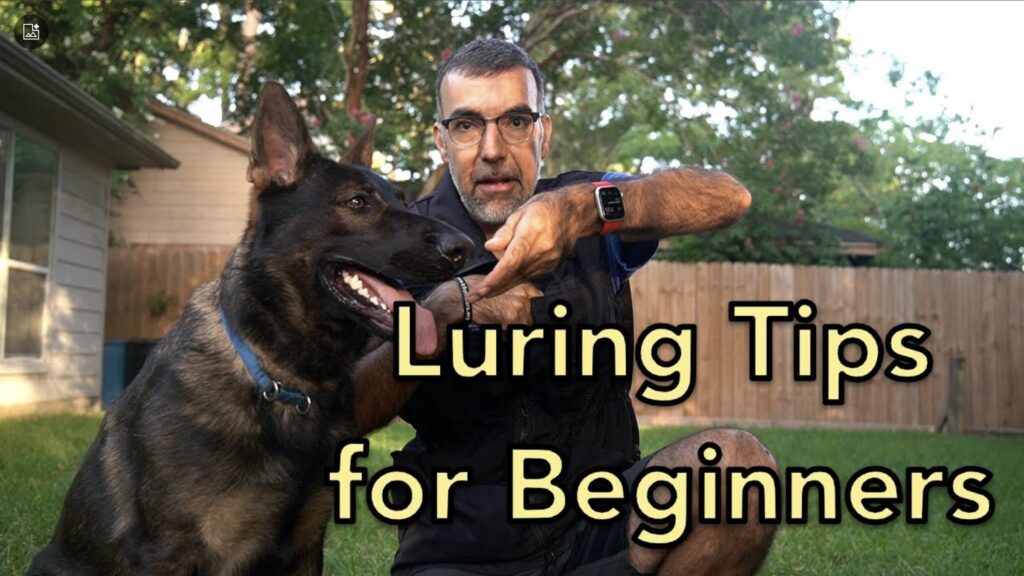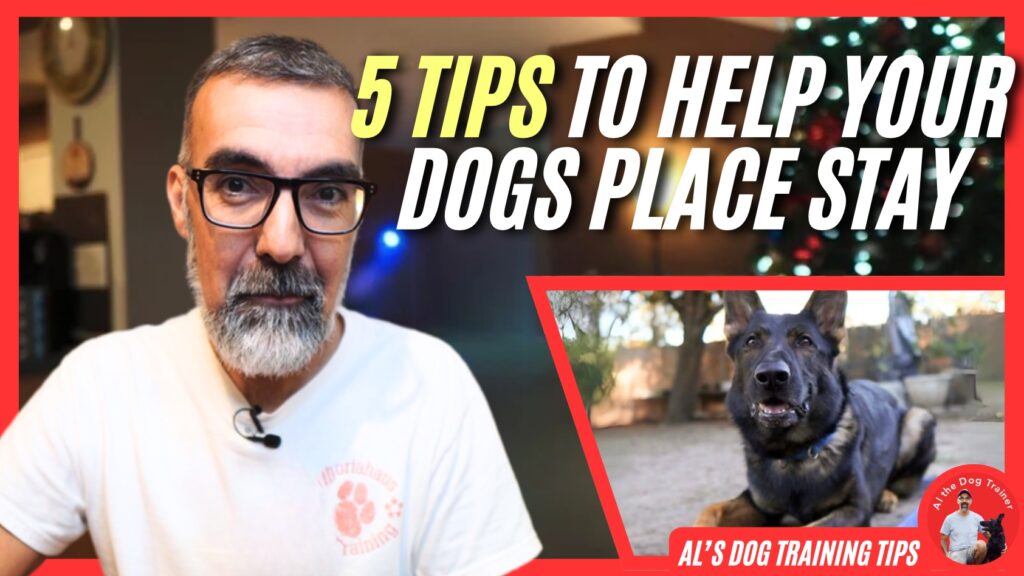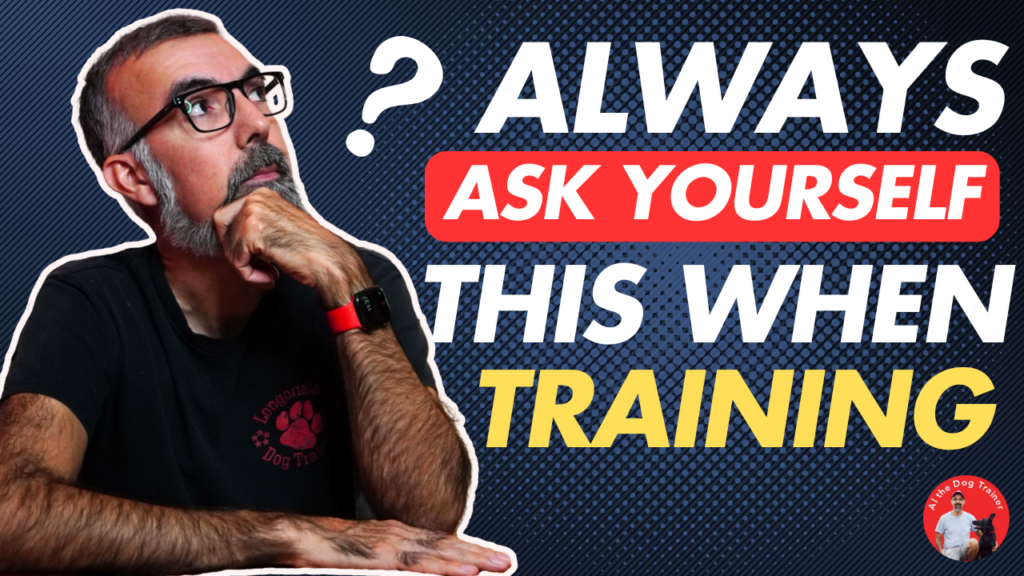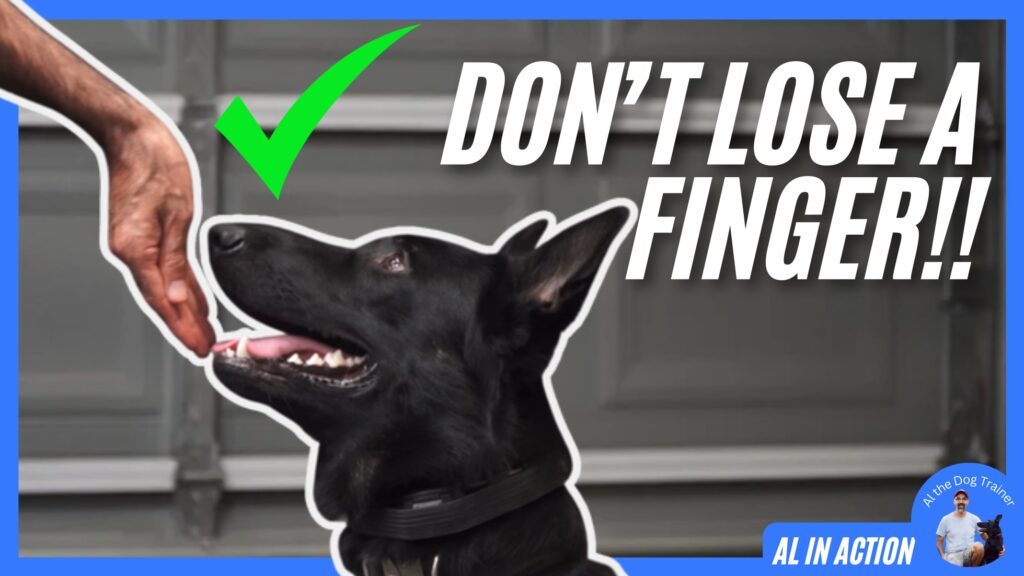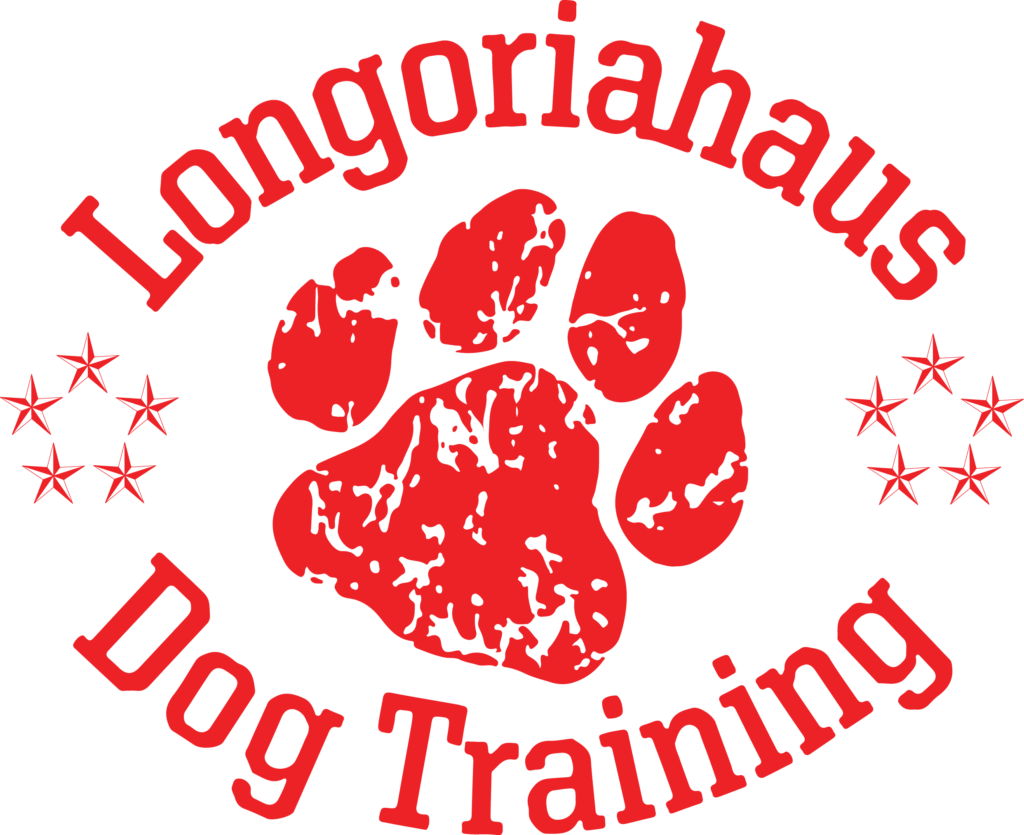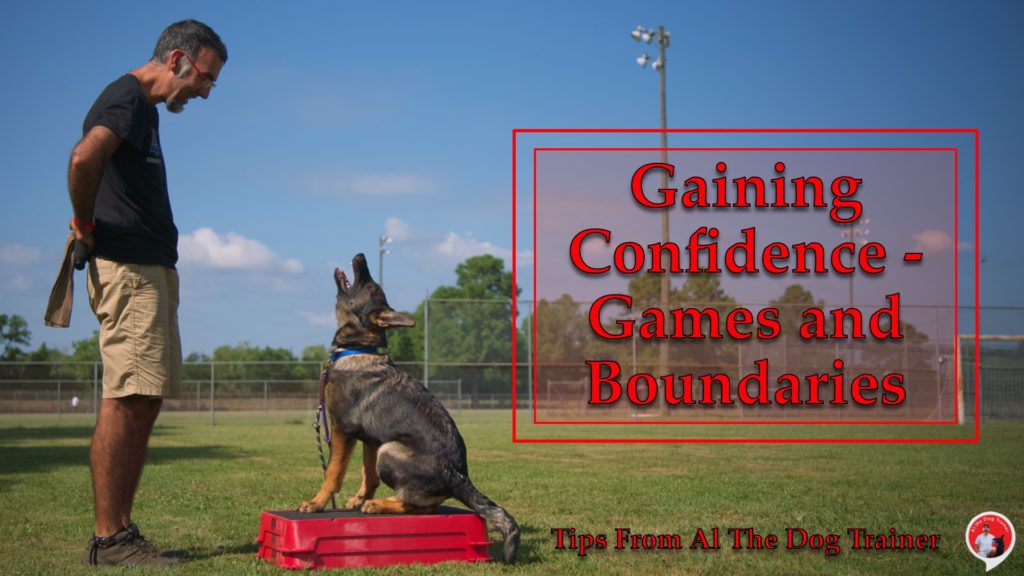
Today’s topic is Gaining Confidence – Games, and Boundaries. So I’m fortunate because I get to see a ton of breeds of dogs. I get to see German Shepherds, Doodles, Labradors, Poodles, and even Dutch Shepherds. Yes, the list can go on and on. I get to know a lot of dogs. One of the other things that I get to do is see a lot of different temperaments. And that’s really what I want to focus on today. One of the specific temperament types that I see a lot is the dog lacking confidence.
Now, it’s worth noting that even if you have a dog with high confidence, they may benefit from some of the things that I’m going to share today. But if your dog has low confidence, then I think these tips that I’m going to give you next are going to be very useful.
Gaining Confidence
So how do you help a dog gain confidence? The first way that you can go about doing that is by playing games with them. And the second way is setting some smart boundaries for that dog.
Okay, so let’s talk about games. When I first started introducing games to dogs, I wanted to teach them in a home or sterile training facility. Just an environment that doesn’t have too much going on. This is because it’s really easy for a shy dog or a dog that lacks the confidence not to want to engage with you in a busy environment. They’re too worried about everything else that’s going on.
Suppose you’re in that kind of sterile environment where you’re teaching the dog how to play. It can be much easier if you’re doing that in your living room, your house, maybe even your backyard. Once you’ve gone through teaching the dog how to play with you, let’s say you do that for 7-10 days. Whenever you start heading out to the environment, you get to have things that will compete for the dog’s attention.
Your front yard, your neighborhood park, those kinds of places I feel that is you should take the dog into those environments. You show them that you’re going to play from one domain to another, and they can begin to understand that they should disregard what’s happening around them.
Now, to be certain, you shouldn’t be playing games with your dogs and environments that are dicey for you. Suppose you’re playing in a dicey environment. That could be dangerous. That’s not the place to play, but that probably goes without saying. You want to play in slightly increasingly challenging environments to help the dog understand.
Smart Boundaries
The next thing you want to do as you’re playing games is to use your obedience to set some smart boundaries for the dog.
The two boundaries that I’m a huge advocate for early on are the place stay and heel position. I feel that shy dogs may be a bit concerned about other people, and you can use these two positions to help the dog understand that they’re with you.
There’s not going to be any pressure on them or any negative consequence when they’re sitting by your side calmly. That’s going to be a place where there’s going to be a ton of reward and that you are going to advocate for them.
I want to clarify something here when you’re setting boundaries for your dog. Let’s say you’re setting the heel boundary for your dog, and the dog is behind the front of your body on the left-hand side, and the leash is loose. The boundary is not just for your dog. The boundary is for other people and their dogs, too. It’s your job to be an advocate for your dog. Other creatures, entities, people, dogs do not cross that line without your permission because I want your dog to actually be able to see that when somebody crosses that line or thinks about crossing that line, that you’re immediately going to dispatch them.
Your dog can gain confidence that you’re going to take care of things. So these two things, playing games first at home, then in your neighborhood, and then teaching your dog a place stay and a heel stay, will really and then advocating for that boundary. It will help build the dog’s confidence that you are a confident leader and that you will send things that they’re afraid of away without them having to become too concerned.
I hope those tips were helpful for you. Please remember that you can always go to my YouTube Channel for more tips or find them right here on www.longoriahausdogtraining.com.
Happy Training!

